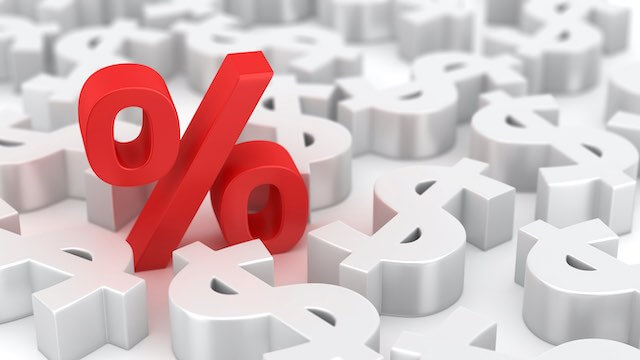Inflation is rising rapidly in 2022, although the rate of increase slowed down somewhat in April. It continues to increase the probability of a higher 2023 COLA for federal retirees next year.
Inflation Rate Increase Slows in April
The Bureau of Labor Statistics reported today that the Consumer Price Index for All Urban Consumers (CPI-U) increased 0.3 percent in April after rising 1.2 percent in March.
Over the last 12 months, the inflation rate has increased by 8.3%.
In other words, the inflation rate increase has slowed—but inflation is still going higher. Core prices, which exclude more volatile measurements of food and energy, are up 6.2% in April from the previous year.
The food index was up 0.9 percent over the month and, not a surprise for those who shop at a grocery store, the food at home index went up 1.0 percent. The energy index declined in April. The index for gasoline fell 6.1 percent over the month, offsetting increases in the indexes for natural gas and electricity.
The decline in the energy index sounds good, but putting inflation in real terms that impact all Americans, the cost of a gallon of gasoline in January 2021, the month when Joe Biden became president, was $2.25. As of this week, the cost of a gallon of gas was, on average, $4.37. According to BLS, for the last 12 months, there has been a 43.6% increase from a year ago in the cost of a gallon of gas—which is now at a record high (see the graphic above for reference).
Inflation Rate and 2023 COLA Prediction of 8.9%
For federal employees who have retired or are planning to retire, The Consumer Price Index for Urban Wage Earners and Clerical Workers (CPI-W) increased 8.9 percent over the last 12 months. For the month, this index went up 0.5 percent.
Last October, the COLA for 2022 was announced. Federal retirees received a 5.9% increase for Civil Service Retirement System (CSRS) annuities and Social Security benefits and a 4.9 percent increase for Federal Employees Retirement System (FERS) annuities starting in January 2022. This was the largest COLA increase in 40 years.
The CPI-W figure for April 2022 was 6.02% percent higher than the average CPI-W for the third quarter of 2021. The annual COLA for the coming year is calculated by comparing the change in the CPI-W from year to year, based on the average of the third-quarter months of July, August , and September.
According to the Senior Citizens League, there could be another big increase in the 2023 COLA as well. The current predicted COLA for 2023 is set to be 8.9 percent—a staggering three percent higher than 2022. If this prediction turns out to be accurate, and a lot can happen between now and mid-October when the final COLA is announced, it would be the largest COLA since 1981.
Federal Employees On the Street Checking Inflation Rate Data
Some readers have inquired as to how the inflation rate is calculated. While the calculation method has changed over time, there are 477 federal employees hired to track changing prices for hundreds of thousands of goods and services every month. Their work is reflected in the inflation calculations released each month by the Bureau of Labor Statistics.
The Wall Street Journal reports that many of these federal employees are now physically checking prices in stores again after doing the checking through telework over a two-year period.
The job of a price-checker is exacting. To price an item, workers go through an up to 11-page list of data points to make sure they are pricing the same item they did the prior month. A can of soup has 12 different specifications, including flavor, size, brand, organic labeling, material of the packaging and dietary features, such as sodium content.
How Fast Your TSP is Dropping in Value in 2022
A number of factors go into the decisions made by individual investors who buy stocks. Issues like the war in Ukraine, China’s aggression toward Taiwan, the inflation rate, the possibility of a recession, and expectations for the economy all play a role.
Right now, there are different events occurring, and all put some pressure on stock prices—and the inflation rate increase is clearly a big factor. All of us are impacted by inflation. Even with wage increases going up, these increases are smaller and lag behind the impact inflation has had on purchasing power.
While this is not new, most TSP investors have never experienced inflation rates as high as we are now experiencing. In conjunction with other world events, 2022 has been a rough year for stock market investors.
So far in 2022, the value of the stock funds in the Thrift Savings Plan has dropped.
The S Fund is clearly in a bear market. The TSP’s small-company fund is down almost 25% so far this year while the C Fund is down more than 15%.
Here is how the core TSP funds have fared in 2023 and so far in April:
| Fund | Month-to-Date | Year-to-Date |
|---|---|---|
| G Fund | 0.08% | 0.73% |
| F Fund | -0.40% | -9.69% |
| C Fund | -3.13% | -15.64% |
| S Fund | -7.59% | -24.99% |
| I Fund | -4.35% | -16.53% |




